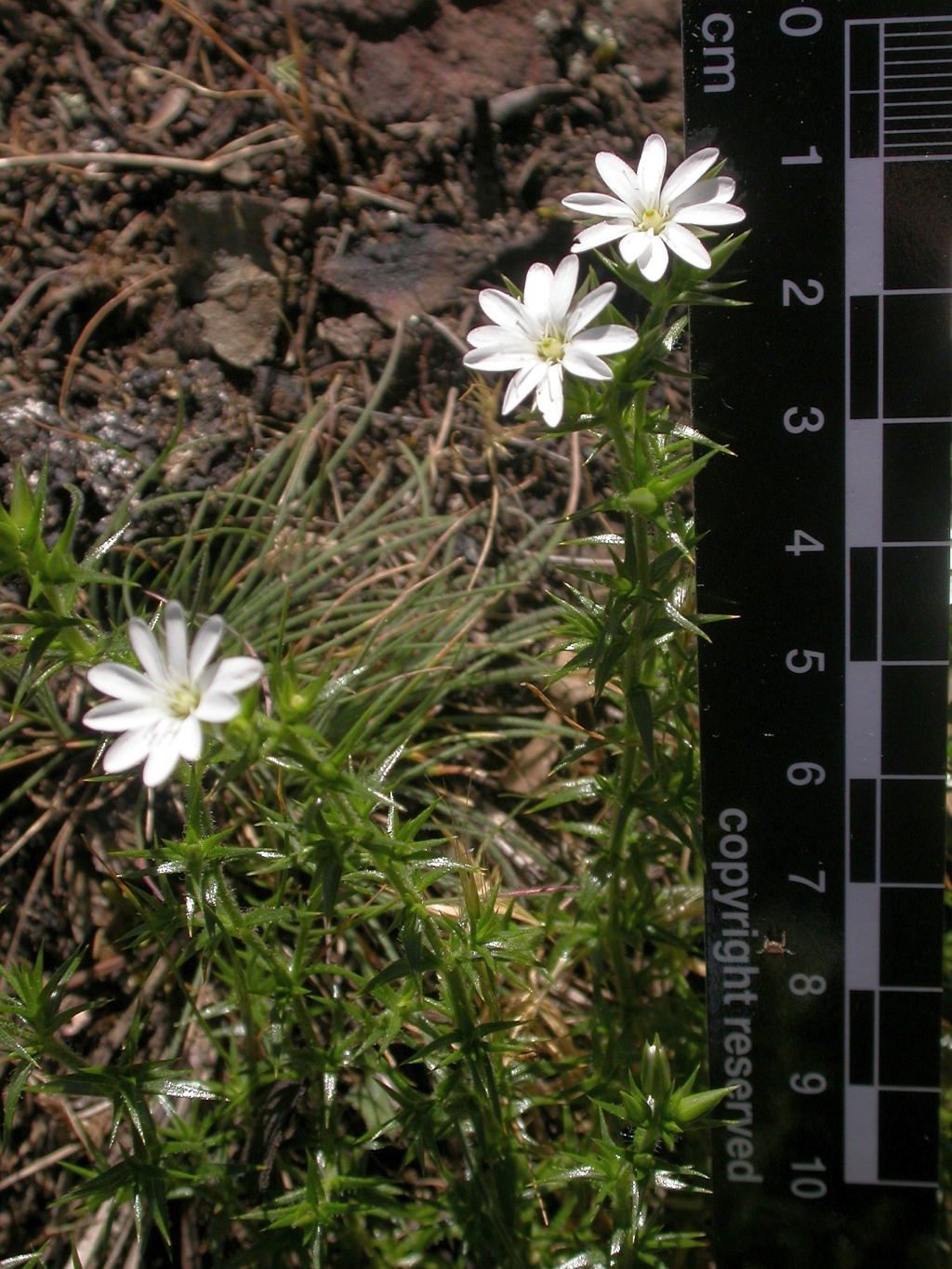Stellaria pungens
Brongn. Prickly StarwortPerennial with rhizomes, often rooting at the nodes, curly white hairs sparse to glabrous on older growth, medium-dense on new growth; stems creeping, prostrate to erect, branched from base, 11–60 cm long. Leaves sessile, narrowly ovate, 4–12 mm long, 1–3 mm wide, apex acute and pungent, margin sparsely ciliate for three-quarters of length. Flowers solitary and axillary or in a terminal interrupted monochasium; fruiting pedicel erect, (3–)8–30(–37) mm long; sepals (5–)5.5–9.5(–10) mm long, glabrous or with a few multicellular hairs at base and margin, apex acute and pungent, margin sparsely ciliate for three-quarters of length, rarely entire; petals 5, c. equal to sepals; stamens 10. Capsule (5–)6–9 mm long, 3–4 mm diam., less than or equal to sepals; valves straight or slightly recurved at apex; seeds (5–)6–16(–18), 1–1.6 (–1.8) mm long, mustard to light brown or ruby-red, tubercles medium to high, rounded, flattened. Flowers Oct.–Feb.
MuM, Wim, GleP, VVP, VRiv, MuF, GipP, OtP, WaP, Gold, CVU, GGr, DunT, NIS, EGL, EGU, WPro, HSF, HNF, OtR, Strz, MonT, HFE, VAlp. Also SA, NSW, ACT, Tas. Widespread in forests and woodlands of southern to northeastern Victoria, common in montane to alpine areas.
Miller, C.H.; West, J.G. (1996). Stellaria. In: Walsh, N.G.; Entwisle, T.J., Flora of Victoria Vol. 3, Dicotyledons Winteraceae to Myrtaceae, pp. 233–240. Inkata Press, Melbourne.
 Spinning
Spinning


